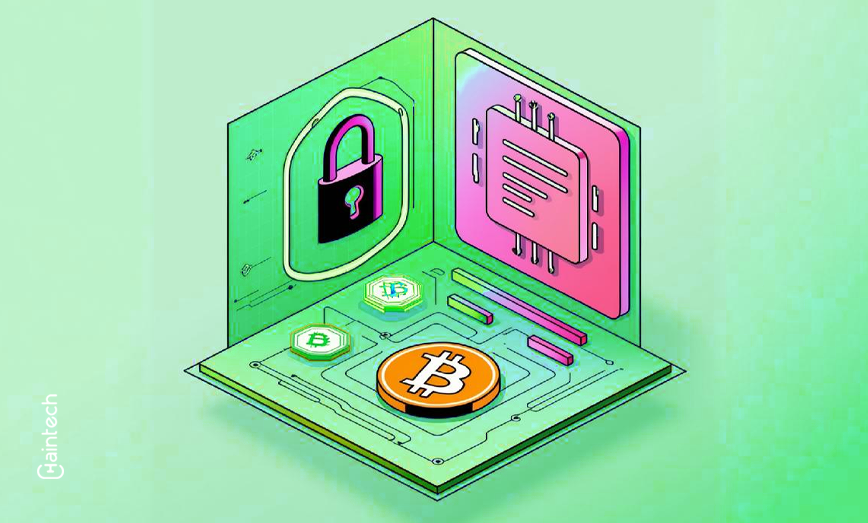Why Card Tokenization Could Be Your Ultimate Solution for Secure Online Payments?

The increasing need for secure online payments
With the rapid growth of e-commerce, the need for secure online payments has become crucial. Consumers expect their sensitive card information to be protected from data breaches, fraud, and identity theft. As a result, businesses are actively seeking solutions that can enhance the security of their online payment systems.
The concept of card tokenization as a solution
Card tokenization has emerged as a powerful solution to address the security concerns associated with online payments. By replacing sensitive card data with a unique identifier called a token, businesses can minimize the risk of exposing valuable information to potential threats. This article will explore the concept of card tokenization and its potential as the ultimate solution for secure online payments.
Understanding Card Tokenization
Card tokenization is a process that replaces sensitive card data with a randomly generated token. This token serves as a reference to the original card data, without exposing the actual information. The purpose of card tokenization is to enhance security by eliminating the need to store sensitive card data in systems vulnerable to data breaches.
The process of tokenization explained
Card tokenization involves several steps. First, the sensitive card data is securely transmitted to a tokenization service provider. The provider then generates a unique token and maps it to the original card data. This token is returned to the merchant, who uses it for subsequent transactions, while the sensitive data remains securely stored with the service provider.
Key players involved in tokenization
There are three key players involved in the tokenization process: the merchant, the tokenization service provider, and the payment gateway. The merchant is responsible for initiating the tokenization process and integrating it into their payment infrastructure. The tokenization service provider generates and manages the tokens, while the payment gateway facilitates the secure transmission of tokenized data between the merchant and the acquiring bank.
How Card Tokenization Enhances Security
Eliminating the need for storing sensitive card data
One of the main advantages of card tokenization is the elimination of the need to store sensitive card data. By replacing this data with tokens, businesses significantly reduce the risk of exposing valuable information to hackers or unauthorized individuals. Even if a data breach occurs, the compromised tokens are useless without the corresponding encrypted card data stored by the tokenization service provider.
Encryption and tokenization: Similarities and differences
While both encryption and tokenization offer security benefits, they differ in their approach. Encryption transforms sensitive data into unreadable, scrambled text that can only be decrypted with a specific key. Tokenization, on the other hand, replaces the data with a non-sensitive token, making it virtually impossible to reverse-engineer the original information from the token alone. Tokenization provides an additional layer of security by removing the sensitive data from the merchant’s systems entirely.
Benefits of tokenization in preventing data breaches
Tokenization offers significant advantages in preventing data breaches. By removing the sensitive card data from the merchant’s systems, the potential payoff for hackers is greatly diminished. Even if a breach occurs, the encrypted card data held by the tokenization service provider is highly secure, lowering the risk of exposing valuable information. This enhanced security can help businesses protect their customers’ data, maintain their reputation, and avoid costly legal and financial ramifications.
The Mechanics of Card Tokenization
Breaking down the tokenization process step-by-step
The tokenization process involves the following steps:
Data Transmission: The sensitive card data is securely transmitted to the tokenization service provider through a secure channel, such as encryption.
Token Generation: The tokenization service provider generates a unique token that acts as a reference to the original card data. This token is non-sensitive and devoid of any personal or financial information.
Token Mapping: The generated token is securely mapped to the corresponding card data. This mapping enables the token to be used for future transactions while ensuring the integrity of the original information.
Token Storage: The token is returned to the merchant and stored in their systems for subsequent use in place of the original card data. The sensitive card data is securely stored with the tokenization service provider.
Token generation and mapping
Token generation is a crucial step in the tokenization process. The tokenization service provider generates a unique token using algorithms that are resistant to cryptographic attacks. This ensures that each token is statistically unique and cannot be easily guessed or exploited.
The mapping between tokens and the original card data is securely maintained by the tokenization service provider. This enables the merchant to use the token for future transactions while ensuring accurate reference to the original card information.
Role of payment gateways in tokenization
Payment gateways play a vital role in tokenization by facilitating the secure transmission of tokenized data between the merchant and the acquiring bank. They ensure that the tokens are sent securely and that the corresponding card data is used for authorization and settlement processes. Payment gateways act as a secure conduit for tokenized transactions, enhancing the overall security of the payment ecosystem.
Tokenization Standards and Integrations
The adoption of industry standards is essential for ensuring the interoperability and security of tokenization solutions. Two prominent standards that govern tokenization in the payment industry are the Payment Card Industry Data Security Standard (PCI DSS) and EMVCo.
PCI DSS sets the security requirements for organizations that handle cardholder data. It includes guidelines for implementing tokenization solutions to protect sensitive data. EMVCo, on the other hand, defines the technical specifications for tokenization in card-present and card-not-present environments. Compliance with these standards ensures the proper implementation and secure operation of tokenization solutions.
Tokenization integration with various payment systems
Tokenization solutions can be integrated with various payment systems, including e-commerce platforms, mobile applications, and point-of-sale (POS) systems. By incorporating tokenization into these systems, businesses can provide a secure and seamless payment experience across multiple channels.
Compatibility with different card types and networks
Tokenization solutions are designed to be compatible with different card types, such as credit, debit, and prepaid cards. They can also support various payment networks, including Visa, Mastercard, American Express, and Discover. This compatibility enables businesses to implement tokenization across their entire payment ecosystem, regardless of the card types or networks involved.
Implementing Card Tokenization Solutions
Integrating tokenization into existing payment infrastructure
Businesses can integrate tokenization into their existing payment infrastructure with relative ease. Depending on the complexity of their system, integration may involve working with payment gateway providers, application programming interfaces (APIs), and developing customized solutions. Proper planning and collaboration with tokenization solution providers can ensure a seamless integration process.
Choosing the right tokenization solution provider
Selecting the right tokenization solution provider is crucial for successfully implementing card tokenization. Businesses should consider factors such as the provider’s expertise, reputation, security features, scalability, and compatibility with existing systems. Conducting thorough research and seeking recommendations from industry experts can help businesses choose a reliable and suitable provider for their specific needs.
Costs and benefits of implementing tokenization
While implementing card tokenization does involve some costs, the benefits far outweigh the initial investment. The costs typically include integration expenses, ongoing maintenance fees, and potential transaction fees associated with tokenized payments. However, the benefits include enhanced security, reduced risk of data breaches, simplified compliance requirements, and improved customer trust and loyalty. Ultimately, the return on investment in implementing tokenization can be significant for businesses operating in the digital payment landscape.
Benefits for Merchants
Reducing the scope of PCI DSS compliance
Card tokenization offers merchants the advantage of reducing the scope of Payment Card Industry Data Security Standard (PCI DSS) compliance. By eliminating the storage of sensitive card data, tokenization removes the necessity for merchants to meet the stringent security requirements associated with storing cardholder information. This reduction in compliance scope saves merchants time, effort, and resources while ensuring the security of customer payment data.
Streamlining recurring payments and subscription models
With tokenization, merchants can streamline recurring payments and subscription models. Instead of requesting sensitive card information from customers each time payment is due, merchants can simply reference the token linked to the customer’s card data. This seamless process eliminates the need for customers to repeatedly enter their payment information, reducing friction and enhancing the overall customer experience.
Enhancing customer trust and loyalty
By adopting card tokenization, merchants can enhance customer trust and loyalty. Customers are increasingly concerned about the security of their payment data, especially in the wake of frequent data breaches. Tokenization provides a secure payment environment that reduces the risk of cardholder data exposure and instills confidence in customers. When customers feel safe and protected, they are more likely to continue engaging with a merchant, resulting in increased customer loyalty.
Benefits for Customers
Convenience and ease of use for customers
Card tokenization offers customers convenience and ease of use when making online payments. Once their card data is tokenized, customers no longer need to manually enter their payment information for subsequent transactions. They can simply provide the token associated with their card, making the payment process quicker and more seamless. This enhances the overall customer experience and encourages repeat business.
Protection against fraud and identity theft
Customers benefit from increased protection against fraud and identity theft through card tokenization. Since their sensitive card data is replaced with tokens during transactions, there is minimal risk of their information being compromised in the event of a data breach. Tokens are useless to potential hackers without the corresponding encrypted card data held by the tokenization service provider, providing customers with a layer of protection against fraudulent activities.
Support for seamless cross-platform payments
Card tokenization enables customers to make seamless cross-platform payments. Tokens can be used across multiple devices and platforms, allowing customers to initiate transactions from their smartphones, tablets, or computers without the need to re-enter their card details. This level of flexibility and convenience improves the user experience, making it easier for customers to complete transactions regardless of the device or platform they are using.
Challenges and Limitations of Card Tokenization
Potential risks and vulnerabilities
While card tokenization provides robust security measures, it is not immune to potential risks and vulnerabilities. One significant challenge is the risk of attacks targeting the tokenization systems themselves. Hackers may attempt to compromise the tokenization service provider’s infrastructure to gain access to valuable card data. This highlights the importance of choosing a reputable and trustworthy tokenization solution provider to mitigate such risks.
Overcoming limitations in tokenized payment processes
Tokenized payment processes may present certain limitations that businesses need to address. For example, tokenization does not eliminate all regulatory and compliance requirements. Businesses must still adhere to relevant industry standards and meet obligations related to data privacy and protection. Additionally, tokenization may not be suitable for all payment scenarios or legacy systems, requiring alternative approaches to secure payment processing.
Addressing concerns regarding privacy and data protection
Despite its security benefits, tokenization solutions may raise concerns regarding privacy and data protection. Customers may question the potential use of their personal information, even in tokenized form. Businesses must address these concerns transparently, emphasizing that tokenization is designed to protect sensitive data and is subject to strict security measures. Clear communication and proactive privacy practices can help alleviate customer concerns and build trust.
Card Tokenization in E-commerce
Tokenization in e-commerce payment flows
In the context of e-commerce, card tokenization plays a crucial role in securing payment flows. When a customer makes an online purchase, their card data is tokenized during the transaction process. Subsequent purchases can then be made using the token, reducing the need for customers to re-enter their payment information. This seamless experience not only improves customer satisfaction but also minimizes the risk of exposing sensitive card data during online transactions.
Single-click purchases and checkout experiences
Tokenization enables single-click purchases and streamlines the checkout experience for e-commerce customers. Once a customer’s card data is tokenized, they can enjoy the convenience of making purchases with a single click, eliminating the need to manually enter their payment information. This frictionless process increases conversion rates and encourages customers to complete their transactions, ultimately driving higher sales for e-commerce businesses.
Impact on conversion rates and customer satisfaction
Implementing card tokenization in e-commerce can have a significant impact on conversion rates and customer satisfaction. By simplifying the payment process and reducing friction, businesses can improve their conversion rates and enhance the overall customer experience. Customers are more likely to complete their purchases if they can easily and securely make payments, leading to increased sales and customer loyalty.
Emerging Trends in Card Tokenization
Tokenization advancements and future possibilities
Continuous advancements and innovations in tokenization technology offer exciting possibilities for the future. Tokenization solutions may integrate advanced encryption algorithms, biometrics, or multi-factor authentication to further enhance security. The ongoing development and refinement of tokenization techniques will play a crucial role in addressing evolving cybersecurity threats and adapting to changing payment landscapes.
Contextual tokenization for enhanced security
Contextual tokenization is an emerging trend in the payment industry. It involves tokenizing specific elements of cardholder data based on the transaction context. For example, the token generated for a particular transaction may be valid only for that specific purchase, limiting its usability in case of a breach. Contextual tokenization adds an extra layer of security by reducing the potential value of compromised tokens.
Tokenization in IoT and mobile payments
Tokenization is gaining traction in the context of Internet of Things (IoT) and mobile payments. As these platforms continue to expand, the security of payment transactions becomes increasingly important. Tokenization ensures that sensitive payment data exchanged between IoT devices or mobile applications remains secure, even in potentially vulnerable environments. The integration of tokenization with IoT and mobile payments promises enhanced security and convenience for consumers.
Regulatory and Compliance Landscape
Regulatory frameworks affecting tokenization
Card tokenization operates within the regulatory framework applicable to payment systems and data protection. Depending on the jurisdiction, these regulatory frameworks may include laws, standards, and guidelines that businesses must comply with. For example, in the United States, the Payment Card Industry Data Security Standard (PCI DSS) sets the requirements for protecting cardholder data. It is essential for businesses to understand and adhere to relevant regulatory frameworks when implementing card tokenization solutions.
Compliance requirements for tokenization service providers
Tokenization service providers also have to comply with specific obligations to ensure the secure operation of their systems. They must demonstrate adherence to industry standards, such as PCI DSS, to assure merchants and consumers that their tokenization services are reliable and secure. Tokenization service providers play a crucial role in safeguarding cardholder data and must maintain high levels of security and compliance.
Ensuring compliance while maximizing benefits
Businesses must strike a balance between achieving compliance and maximizing the benefits of card tokenization. Compliance requirements should be integrated into the implementation process to mitigate risks and ensure that regulatory obligations are met. By working closely with tokenization solution providers and adhering to relevant standards, businesses can leverage the advantages of tokenization while maintaining compliance with regulatory frameworks.
Case Studies: Successful Tokenization Implementations
Examples of enterprises adopting tokenization successfully
Numerous enterprises have successfully adopted tokenization to enhance the security of their online payment systems. For example, global financial institutions and payment processors like Visa and Mastercard have implemented tokenization to protect cardholder data. E-commerce giants like Amazon and PayPal have also embraced tokenization to streamline their payment processes and provide a secure shopping experience for their customers.
Concluding Words
Successful tokenization implementations have yielded positive outcomes for businesses. These outcomes include reduced risks of data breaches, enhanced customer trust, streamlined payment flows, and increased efficiencies in managing recurring payments. Enterprises that have implemented tokenization have gained valuable









